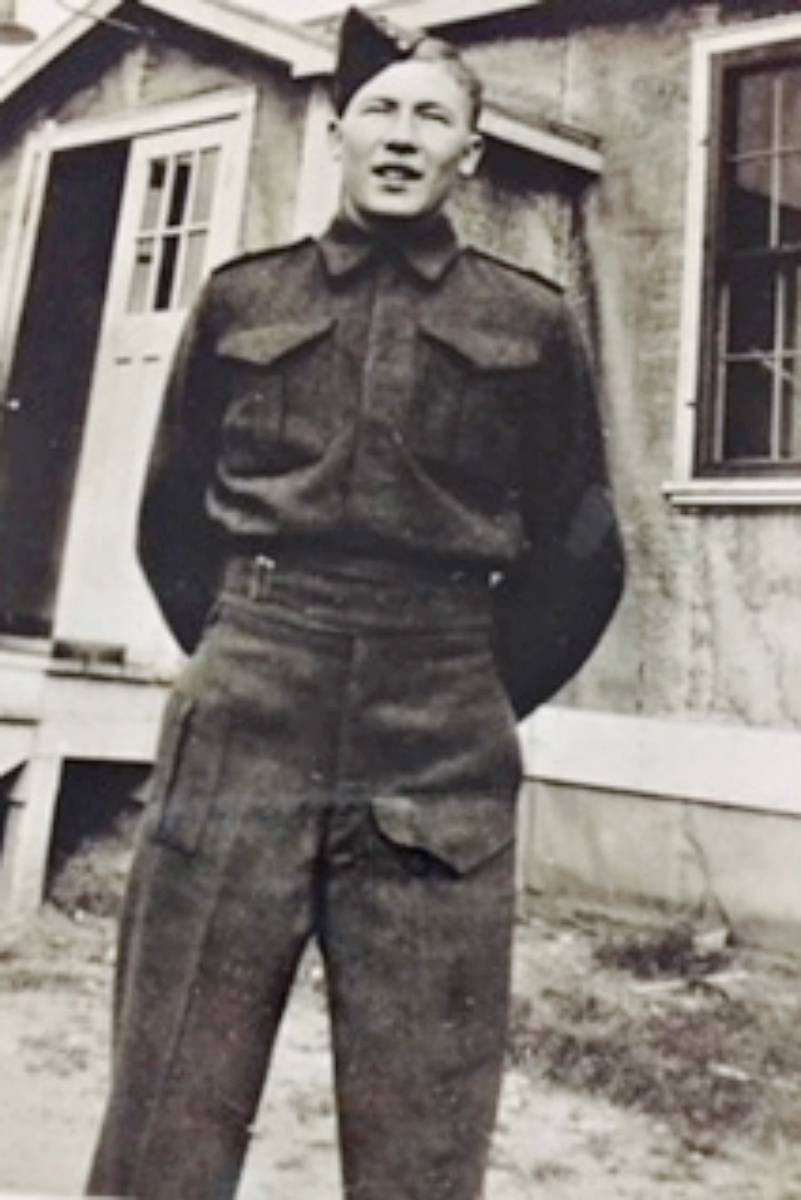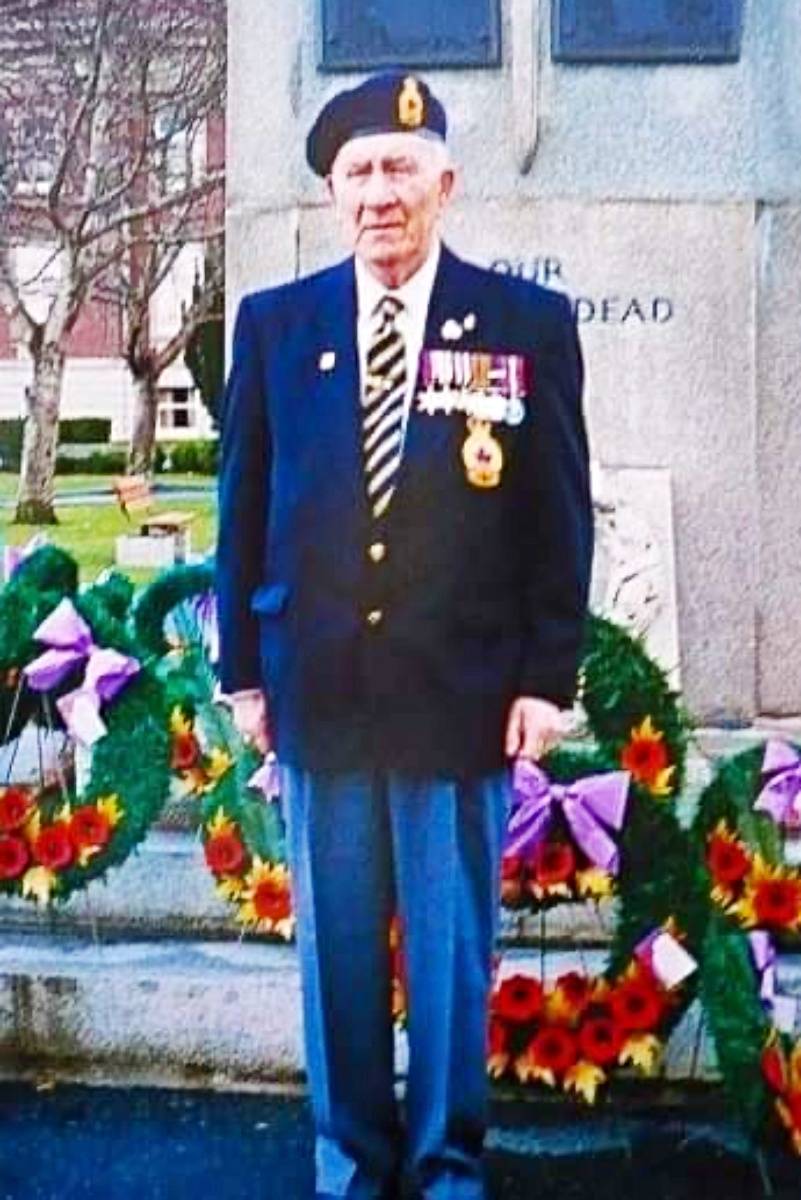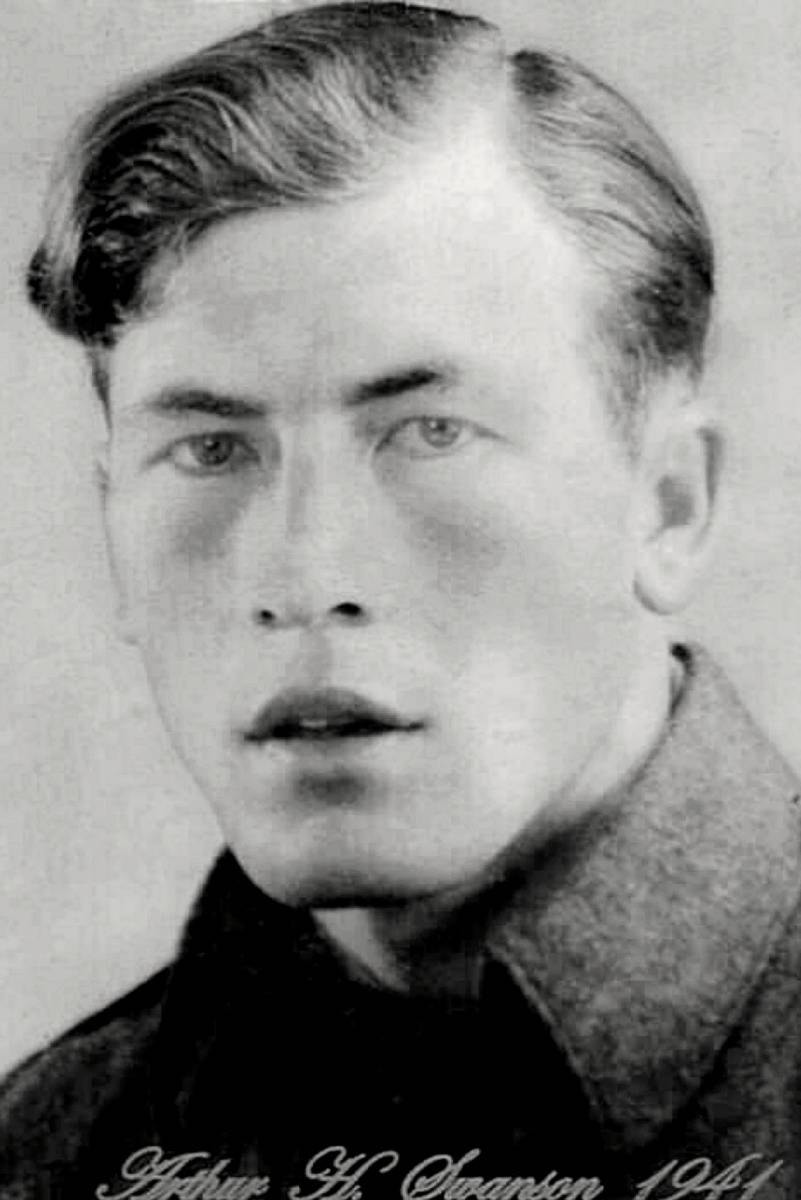Situated on the coastline of the Adriatic Sea, with its quaint fishing boats and cliffs standing proud above the see-through teal green waters, sits the Italian town of Ortona, where dream holiday getaways are photographed on modern-day HD digital cameras. It is a stark contrast to the grainy black and white pictures of the crumbled village 77 years ago when elite German paratroopers set boobie traps and bombs while Canadian forces battled for the occupancy of the crushed buildings and rubbled roads.
A cemetery in the town today, holds the bodies of 1,375 eternally sleeping Canadian sons under the plain white headstone markers engraved with their names.
One name that is not marked in this resting place more than 8,750 km across the world from Prince Rupert soil is that of Corporal Arthur Swanson.
In the mud and rain of early December 1943 the 1st Canadian Infantry Division and 1st Canadian Armoured Brigade engaged in the most savage battle of the Italian Campaign. German soldiers hardened by the years of war were unrelenting in the defence of the bombed-out buildings when the mainly fresh-faced Canadian opposition, which included the Loyal Edmonton Regiment and the Seaforth Highlanders, upturned the tables. Street-to-street, house-to-house, and room-to-room, the Canadians mouseholed their way to victory by finally securing the town three days after Christmas.
The battle was known by troops as Bloody December due to the extreme injuries and high casualty loss.
Corporal Arthur Swanson was a Métis soldier and mechanical engineer working on tanks and artillery during the war. He grew up in Alberta and enlisted as a young man as soon as he could, his daughter Brenda Stace-Smith told The Northern View.
After completing basic training Swanson was shipped overseas to England to complete further training. When the call to battle finally came for his regiment they were sent to locations unknown to them. In July 1943, he boarded the MS Batory which took the young troopers to their first battle encounter.
READ MORE: Remembering Rupert: A historical report on Prince Rupert during the Second World War
Brenda said when she was younger her dad would sometimes talk of Ortona. She remembers being called into the living room by her father one day. He was excited and pointed out to her a T.V. clip showing a photograph of soldiers sitting on top of rocks in front of a bombed-out church on Christmas day.
“You could see all these men sitting on the ground around this long table having Christmas dinner. My dad was sitting at that table in Ortona.”
Brenda said she was told the men gathered and ate in shifts.
“They ate roast pork, mashed potatoes, nuts, gravy and applesauce. They sang Christmas carols and thought about their families back home,” she said.
Many of the Métis soldiers were stationed together because they spoke Cree, a language the Germans could not decipher.
“It was like a coded language for them,” Brenda said.
One of the memorable highlights Arthur shared with his children was the time he attended an allied troop pep rally where British Feild Marshall Bernard Montgomery spoke to the troops before deployment to the Mediterranean Campaign.
After Bloody December in Ortona the soldiers went on to serve postings in Holland, France, Belgium and Germany, with Arthur serving in each of the locations until the war ended.
Corporal Swanson became a decorated soldier during his service to Canada. He wore the 1939-45 Star, the Italy Star, the France Star, the Germany Star, the Defence Medal and Canadian Volunteer Service Medal with Clasp proudly on his uniform above his heart.
While Arthur served shoulder to shoulder with soldiers on an equalized basis, when Métis Veterans returned home they were equals no longer. Indigenous and Métis soldiers were forgotten. They were not permitted the same benefits or supports as other veterans.
After returning to Canada when the war ended Arthur met his wife Lily, had two children and moved to Prince Rupert in 1949 where their family grew to ten children in total.
Arthur made a life for himself and Lily on the North Coast. He became a longshoreman and fished the B.C. coast for salmon, the Alaskan seas for halibut and once fished as far away as Newfoundland for herring. Arthur and Lily moved to Port Edward where he became a marine engineer. He continued working until his retirement, all the time contributing to his community but never receiving the same benefits and recognition for his war efforts as other returned servicemen did.
READ MORE: Metis veterans get long-awaited recognition ahead of Remembrance Day
“Arthur was a kind and respected man, who adored his family,” Brenda said. “He wasn’t recognized as a Veteran when the wear ended. They didn’t recognize Métis as Veterans back then.”
“They were promised education and training when they got back and they never received anything from it,” she said.
There are some that would say this treatment, this forgetting, this inequality is a stain on the Canadian flag.
In November 2000 the Government of Canada erected a plaque at the Piazza Plebiscito in Ortona, to recognize Bloody December as a National Historic Event of Canada that “symbolized the efforts of the Canadian Army in the Italian Campaign during World War II”.
But, it wasn’t until 2017, 72 years after the end of the Second World War, that by signing the Canada-Métis Nation Accord it was agreed by the Government of Canada that Métis veterans were a priority who required necessary addressing.
“The Métis Veterans Legacy Program recognizes the wrongs Second World War Veterans experienced upon their return to Canada. Many of our Métis Veterans were systemically discriminated against by Veterans Affairs Canada. They did not receive the same supports, resources or benefits promised to them that their non-Métis comrades enjoyed,” the Métis Veterans Website states.
“The importance of an apology from Canada was expressed as the highest redemption by all of our Veterans. On September 10, 2019, Canada formally apologized for the neglect and unfair treatment of our Veterans during their service in WWII.”
Minister of Veterans Affairs and Associate Minister of National Defence, Lawrence MacAulay issued an apology statement that can be found on the website.
“We regret that our country has taken three-quarters of a century to address the concerns of Métis Veterans who joined Canada’s call to arms to enter the Second World War. They left this country not knowing the enemy they would face, nor the countries and people they were to defend. They were nonetheless, instrumental in Canada’s action to protect basic rights and freedoms around the globe.”
Having passed away in 2004 Arthur was not present in body on a breezy Oct. 30, 2020. Coloured autumn leaves fell from trees in the background as a small family group surrounded his widow Lily Swanson who sat at a table adorned with a small wreath. The gathering was understated given Arthur’s contribution to his country and his major military service.
Outside of Acropolis Manor Seniors Home in Prince Rupert in the chilly air, a cell phone sat in front of Lilly. It was from this cell phone which she received a long-deserved ‘thank you for serving’ and an apology posthumously on behalf of her husband from the Government of Canada. It only took 75 years and 8750 km from a little town set on the Adriatic Sea.
“Today was a recognition that my father was a veteran from 75 years ago. He was sent an official apology from the Minister for never being recognized. It has been an emotional long process,” Brenda said. “I am grateful they have finally recognized Métis Veterans.”
Corporal Arthur Swanson once said to his children, “There are awful things in war that a man should never see, or ever forget.”
Lest we forget.
K-J Millar | Journalist
Send K-J email
Like the The Northern View on Facebook
Follow us on Twitter


